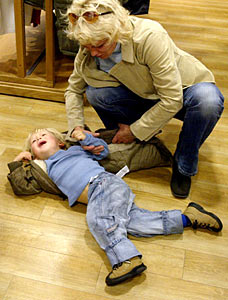This post is the first of a series called “Interventions for Autism”. The series will include reviews of interventions such as speech-language therapy, cognitive behavior therapy, social skills training, psychomotor therapy, medication and more.

Applied Behavior Analysis is based on the behaviorism principles developed by B. F. Skinner.
Applied Behavior Analysis, or ABA, is a therapy that has been used since the 60’s and that is based on behaviorism principles. ABA aims to change behavior by assessing the relationship between a targeted behavior and the environment.
Although, ABA can be used as intervention in many different health related areas such as prevention of AIDS and of coronary disease, it has been most notably utilized in people with autism. The therapy is used to teach communication, play, social, academic, self-care, and work skills, but also to reduce behaviors like tantrums and stereotypies.
The therapy is known to show improvements in individuals of all ages, although, its effects are greater when applied intensively at a young age.
ABA method is based on the contingency between Antecedent, Behavior, and Consequence.
Antecedent: what precedes the target behavior that triggers it
Behavior: the target behavior
Consequence: what follows the target behavior that serves to increase, maintain, or reduce the behavior

tantrum is an undesired behavior that is frequent among children with autism
Example of an undesired behavior:
Antecedent: The mother refuses the access to candy.
Behavior: The child starts to cry.
Consequence: The mother gives access to candy.
This will tell the child that crying is a good strategy to obtain the desired item. Therefore the next time the child wants something, the same behavior (crying) will probably occur. By not giving access to the desired item and ignoring the undesired behavior, the child will learn that crying is not a good strategy and its occurrence in the future will diminish.
The same logic applies in order to increase a desired behavior. A desired behavior that is followed by something positive to the child (greeting the child, giving a reward) will increase the probability of the occurrence of that behavior in the future.
There are currently different programs based on ABA intervention but in general all break down skills into small and easy steps that help the child learn more easily. One-on-one aide as well as facilitated play with peers are often part of the intervention.
Other interventions for Autism:
– Cognitive Behavioral Therapy
– Speech-Language Therapy
– Peer-Mediated Instruction
– Sensory Integration Therapy
– SCERTS model
– Early Start Denver Model (ESDM)
– Floortime therapy
– Augmentative and Alternative Communication
 Floortime is a therapy derived from the Developmental, Individual-differences, Relationship-based (DIR) model. This developmental therapy has for its core precept to understand the child’s sensory differences and to use these to help children with ASD in their development. The emphasis is placed on the creation of emotionally meaningful learning experiences that will encourage developmental abilities.
Floortime is a therapy derived from the Developmental, Individual-differences, Relationship-based (DIR) model. This developmental therapy has for its core precept to understand the child’s sensory differences and to use these to help children with ASD in their development. The emphasis is placed on the creation of emotionally meaningful learning experiences that will encourage developmental abilities.



